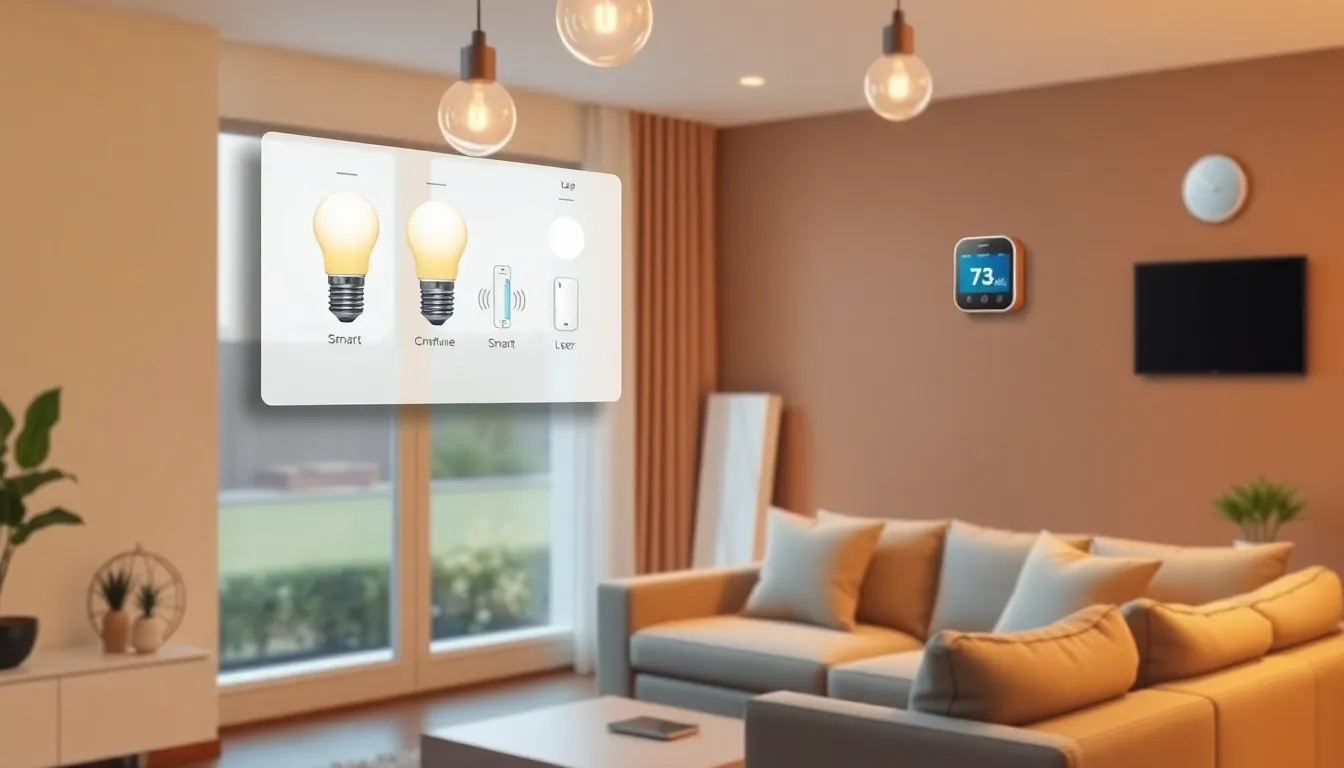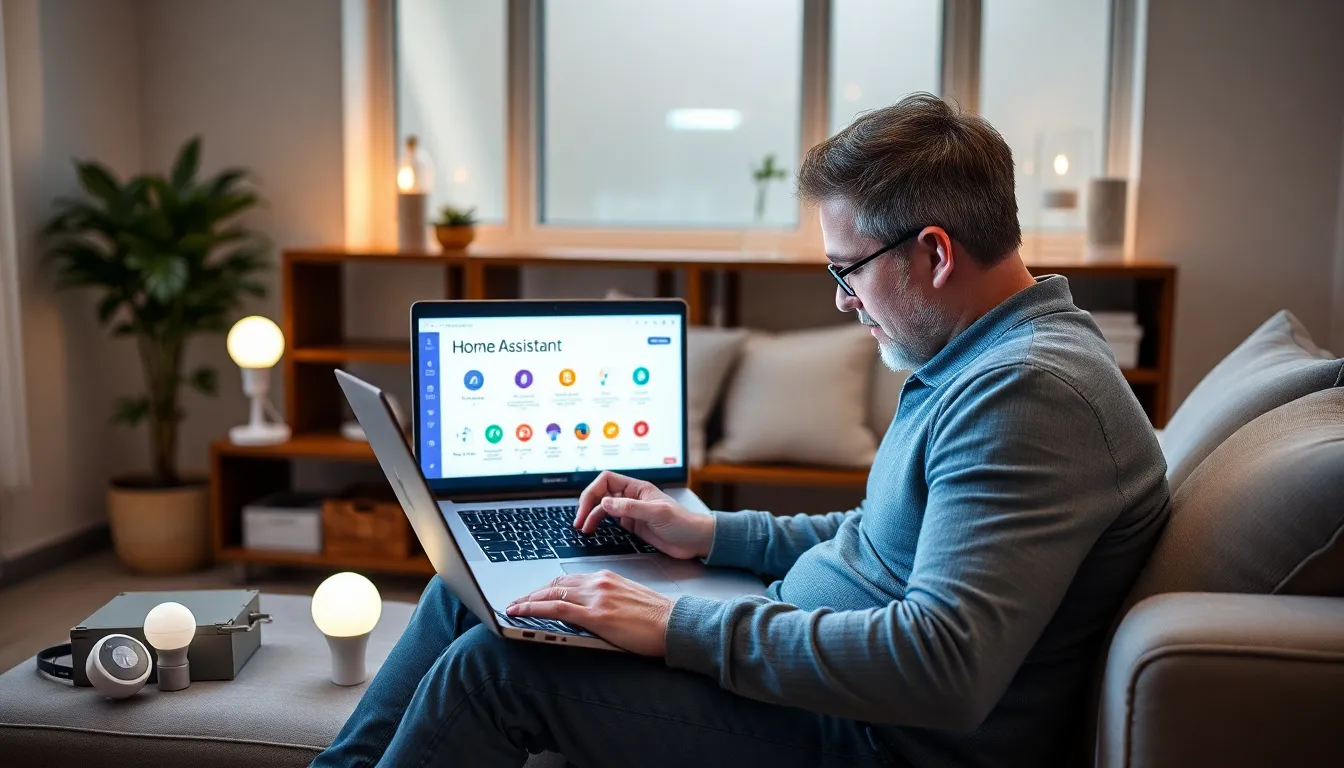Table of Contents
ToggleImagine walking into your home and having it greet you like an old friend. With home assistant automation, that dream can become a reality. No more fumbling for light switches or wrestling with thermostats. Instead, your home responds to your every whim, making life smoother and a whole lot more fun.
Understanding Home Assistant Automation
Home assistant automation streamlines daily tasks, enhancing convenience and efficiency in residential settings. This technology connects various devices and systems, allowing for seamless interactions.
What Is Home Assistant?
Home Assistant is an open-source platform designed to centralize smart home management. Users can integrate a wide range of devices, from lights to security systems. Customizable configurations allow for tailored automation suited to individual needs. Advanced features accommodate voice commands and mobile apps for remote control. Community-driven development ensures continuous improvements and support.
Benefits of Home Assistant Automation
Home assistant automation offers numerous advantages that elevate user experience. Time savings arise from automated routines that handle repetitive tasks. Energy efficiency increases, as systems adjust based on occupancy and preferences. Enhanced security features include alerts and remote monitoring capabilities. Flexibility allows users to tailor automations, making homes responsive to changes in lifestyles. Improved comfort results from personalized settings that adapt to environmental factors.
Getting Started with Home Assistant Automation


Home Assistant automation simplifies managing smart homes. Users can create personalized experiences by connecting various devices through a central platform.
Setting Up Your Home Assistant
Installing Home Assistant begins with choosing a device to host the software, such as a Raspberry Pi or a virtual machine. Connecting the host device to the local network enables easy access and control. Following installation, users access the web interface to configure settings. Integration of smart devices occurs by adding them within the interface. Each device has specific instructions, often available on the Home Assistant documentation site. Completing these steps grants users the ability to monitor and control their smart home setup effortlessly.
Basic Automation Concepts
Automations involve triggers, conditions, and actions that execute specific tasks based on events. Triggers could include time, device status, or physical sensors detecting movement. Conditions refine when actions take place, ensuring automations run only under specific circumstances. Popular examples involve turning lights on or off at certain times, adjusting the thermostat if someone is home, or alerting users when doors open unexpectedly. Understanding these components helps users design effective automations that enhance home comfort and security, making daily routines seamless.
Creating Effective Automations
Creating effective automations requires understanding the key components that facilitate seamless interactions between devices. Triggers and actions form the backbone of automated tasks.
Triggers and Actions
Triggers initiate automation by detecting specific events. For example, a motion sensor’s activation can trigger lights to turn on. Actions represent the tasks performed in response to triggers. Turning on a fan upon detecting high temperatures is another clear action. Designing automations involves selecting appropriate triggers and defining the corresponding actions that directly enhance daily comfort.
Conditions and Customizations
Conditions add another layer of specificity to automations. They define the parameters under which actions may occur. For instance, not every motion trigger should activate lights; occupancy may dictate whether lights actually turn on. Customizations allow users to modify automations based on personal preferences. Individuals can set unique schedules or adjust settings according to environmental factors. Overall, leveraging conditions and customizations leads to smart home systems that better suit user lifestyles.
Advanced Home Assistant Automation Techniques
Advanced home assistant automation includes various techniques that significantly enhance smart home functionality. By employing these methods, users can create highly personalized environments.
Integrating Third-Party Services
Integrating third-party services expands the capabilities of home automation. Services such as IFTTT and Zapier facilitate connections with numerous applications. These platforms automatically trigger actions based on specific events from different services. For example, receiving a notification when the weather changes can prompt an automated response like adjusting thermostat settings. Users benefit from enhanced versatility when combining multiple services, increasing the overall efficiency of their smart home.
Using Scripts and Templates
Using scripts and templates streamlines automation management. Scripts allow users to create complex sequences of tasks, providing greater control. For instance, a script can set the lighting, temperature, and security settings for movie night. On the other hand, templates simplify the automation process by allowing users to define common parameters. By using YAML formatting for automation, users can reuse these templates across multiple devices. This practice reduces setup time and ensures consistency in managing smart home systems.
Common Challenges and Troubleshooting
Home assistant automation can present a few challenges that might disrupt the user experience. Identifying these issues early on helps in creating a smoother and more enjoyable automation setup.
Issues with Automations
Users encounter various issues when setting up automations. Devices might not respond to commands due to network connectivity problems. Incompatibility among different smart devices can lead to unexpected behavior. Additionally, improper trigger configurations frequently result in automations failing to execute. Users often overlook this aspect when creating their settings. Timing issues can also surface, especially when using multiple devices without synchronized schedules. Identifying these scenarios ensures a more reliable automation framework.
Tips for Debugging
Troubleshooting automations requires specific techniques. Start by checking device connectivity for any potential issues. Use the Home Assistant dashboard to inspect log files, as they provide valuable insights into errors. Adjust configurations by ensuring all triggers and actions are set correctly. Test individual components of the automation to isolate the problem effectively. Verify that conditions are functioning as intended to confirm they do not interfere with execution. Adding delays to triggers can resolve timing conflicts in case of multiple devices. Following these steps leads to efficient debugging and enhances overall system performance.




